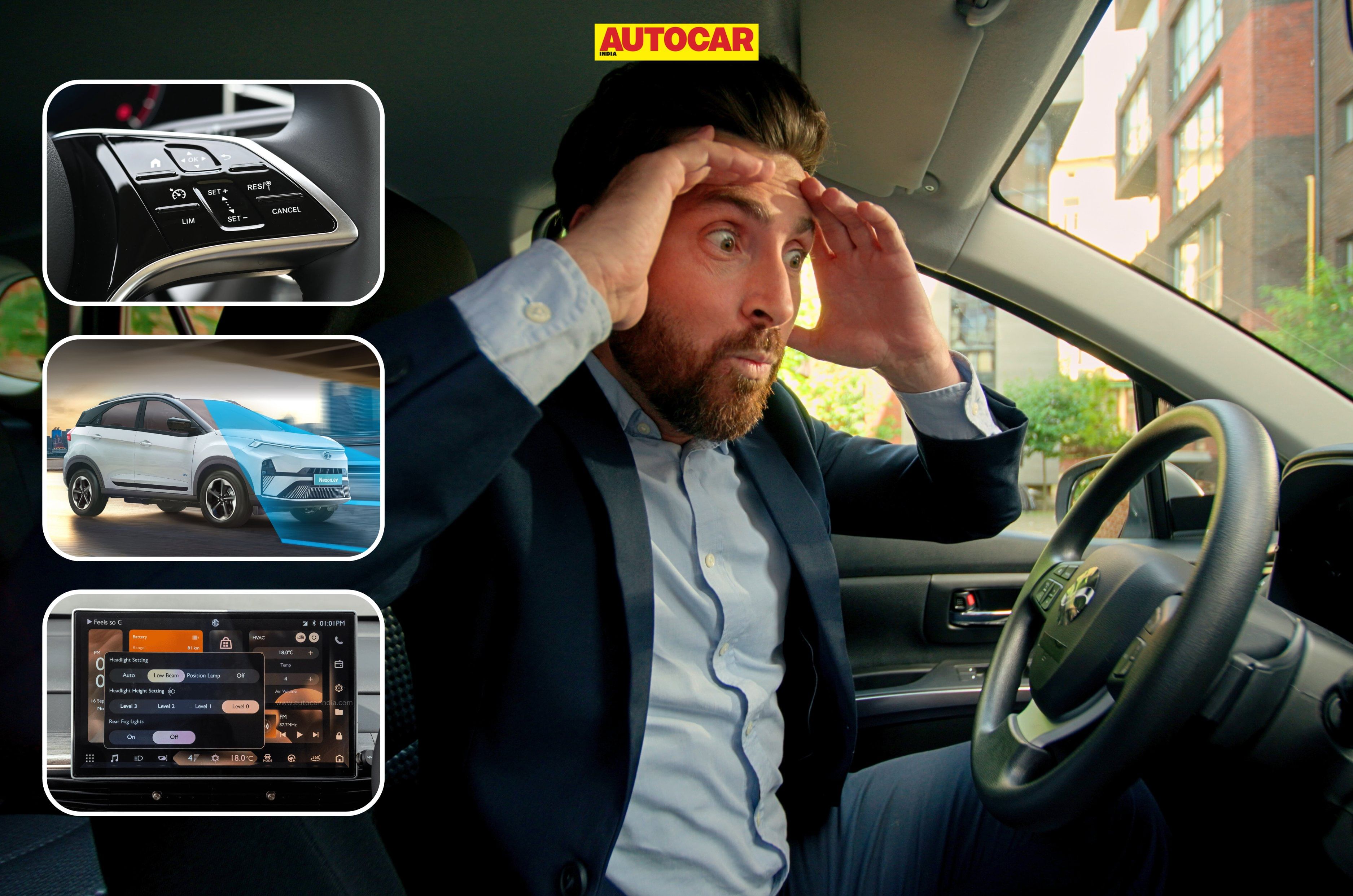
Features in cars have come a long way–from LED lights and touchscreens to ventilated seats and connected-car tech, we’ve seen them all. While some of these features come in handy and work as intended, others make one question why they exist in the first place. Here’s a list of car features that drivers may find unpleasant to deal with.
1. Touchscreen-based HVAC and other controls
Screens, while loaded with features, can cause you to take your eyes of the road, posing a safety risk .

Using amenities in cars from yesteryear was simple, since most functions were controlled by physical buttons — from adjusting volume to changing your audio source. Physical buttons were especially convenient while on the move without getting distracted. But after being replaced by touch panels and screens, it’s traded form over function. Some cars also have capacitive touch panels for controlling HVAC functions which don’t always respond well to touch inputs. With some cars having a touch screen for every function, getting acquainted with it takes time. Most drivers end up taking their eyes off the road to use these, which poses a safety risk.
2. Turning off ADAS features every time you turn your car on
If you don’t prefer ADAS, you can’t forget to turn it off in some cars.

With poor, unmarked roads and chaotic traffic, especially in urban environments, ADAS, while a good-to-have safety feature, hasn’t found its use yet in India. Some drivers would prefer to turn off ADAS completely. But some in some cars, the ADAS settings revert back, causing drivers to change the setting everytime they get into their car.
Things could go risky if you forget, especially in stop-and-go traffic, where a two- or three-wheeler, a person, or an animal can suddenly come your way, triggering the automatic emergency brake (AEB). There’s a risk of being rear-ended if the system reacts unnecessarily.
3. Unnecessary voice prompts or alerts
Loud beeps could distract some drivers.
Modern cars come with a number of safety related warnings but sometimes these warnings instead of helping you, could be distracting for some. For example, rear seat belt alerts keep on beeping even when there are no rear passengers. Similarly, safety alerts for ADAS and proximity sensors around your car keep beeping in traffic conditions, despite your car being at a safe distance from other vehicles, which could distract a driver.
4. Capacitive touch buttons on the steering
Touch-based controls on steering wheels are unresponsive at times.

Steering-mounted controls for handling calls and media are useful, letting you control the required functions with ease and without taking your eyes of the road. Earlier controlled by physical buttons, they’ve now been replaced with touch-sensitive buttons. When you grip the wheel, you accidentally activate capacitive touch buttons on the spoke, triggering unwanted functions, which is unintutive to use.
5. Engine auto start/stop
If not calibrated well, could be unappealing in stop and go traffic conditions.

Engine auto start/stop is a feature that turns off your engine when running idle at a traffic stop. If not calibrated well, the feature turns off your engine before you even come to a stop. Moreover, it takes a lot more time to restart your engine. The feature can be off putting, especially in slow-moving traffic, where there’s a lot of stop-and-go movement happening.
6. Ambient lighting
A disturbing feature that affects driving focus

Ambient lighting is a common feature in cars these days to enhance the overall cabin experience. When some manufacturers do it subtly, it does go well with the in-cabin experience. But some manufacturers tend to overdo it, thorugh more lighting points within the interior, integrating it into every function that drivers could find disturbing.
When synced with ADAS and other features, it’s also used for visual alerts, which can be intrusive and take away your focus from driving, posing as another safety risk.

